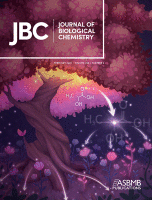- EN - English
- CN - 中文
Serial Room Temperature Crystal Loading, Data Collection, and Data Processing of Human Glutaminase C in Complex with Allosteric Inhibitors
人谷氨酰胺酶 C 与变构抑制剂复合物的系列室温晶体加载、数据收集和数据处理
发布: 2022年09月20日第12卷第18期 DOI: 10.21769/BioProtoc.4509 浏览次数: 1426
评审: Joana Alexandra Costa ReisLaura RotilioLuca Iacovino
Abstract
Cancer cells often overexpress glutaminase enzymes, in particular glutaminase C (GAC). GAC resides in the mitochondria and catalyzes the hydrolysis of glutamine to glutamate. High levels of GAC have been observed in aggressive cancers and the inhibition of its enzymatic activity has been shown to reduce their growth and survival. Numerous GAC inhibitors have been reported, the most heavily investigated being a class of compounds derived from the small molecule BPTES (bis-2-(5-phenylacetamido-1,3,4-thiadiazol-2-yl)ethyl sulfide). X-ray structure determination under cryo-cooled conditions showed that the binding contacts for the different inhibitors were largely conserved despite their varying potencies. However, using the emerging technique serial room temperature crystallography, we were able to observe clear differences between the binding conformations of inhibitors. Here, we describe a step-by-step protocol for crystal handling, data collection, and data processing of GAC in complex with allosteric inhibitors using serial room temperature crystallography.
Graphical abstract:

Workflow for serial room temperature crystallography. Diagram showing the processing and scaling routine for crystals analyzed using serial room temperature crystallography.
Background
We solved a number of X-ray crystal structures of glutaminase C (GAC) bound to different BPTES (bis-2-(5-phenylacetamido-1,3,4-thiadiazol-2-yl)ethyl sulfide)-class allosteric inhibitors under cryogenic crystallographic conditions (Huang et al., 2018; Milano et al., 2022). Although they vary in potency for GAC, the structures show that the contacts between the small molecule inhibitors and GAC are largely conserved. In order to visualize differences at the binding interface between GAC and the inhibitors, we employed fixed-target serial room temperature synchrotron crystallography (Wierman et al., 2019; Milano et al., 2022). An advantage of using serial room temperature X-ray crystallography is to help overcome any cryo-induced structural biases, such as “trapping” the protein/ligand in a distinct conformation as a result from crystal freezing. Although this technique requires substantially more crystals than cryogenic crystallography due to radiation damage to the sample, it can yield structures that are more dynamic and fluid. Consequently, structures solved using room temperature X-ray crystallography are capable of revealing differences in proteins and protein/ligand complexes that perhaps are more physiologically relevant. We recently used this technique to solve the structure of apo GAC (Illava et al., 2021). We hypothesized that structures of the GAC/inhibitor complexes at room temperature would make it possible to visualize subtle changes in the binding characteristics of the small molecules that were not evident from the low-temperature cryo-structures. Indeed, we were able for the first time to observe clear structural differences in the binding poses between two allosteric inhibitors of widely different potencies in the GAC/inhibitor complexes solved at room temperature. Here, we describe a detailed protocol for crystal handling, data collection, and data processing when employing serial room temperature crystallography (Figure 1).
Materials and Reagents
Pipette tips (USA Scientific, TipOne, catalog number: 1111-3700)
GAC/inhibitor crystals (room temperature)
Equipment
Forceps (Fisher Scientific, catalog number: 09-753-50)
Micro tools set (Hampton Research, catalog number: HR4-811)
Pipettes (Rainin, catalog number: 17008649)
Light microscope (Olympus)
Hex key
Crystallography sample supports (MiTeGen)
Sample loading box: humidity controlled and includes optical microscope
Sample loading station: connected to a vacuum pump (controlled by a foot pedal) for sample wicking
Sample supports: include a frame containing the support film and a goniometer base
Sample Mylar seals
Software
XDS Package (https://xds.mr.mpg.de)
CCP4 Program Suite (https://www.ccp4.ac.uk)
Filtering program cut_XDS and script to run it cut_XS.csh (https://www.chess.cornell.edu/macchess/mx/mx_software)
Procedure
文章信息
版权信息
© 2022 The Authors; exclusive licensee Bio-protocol LLC.
如何引用
Readers should cite both the Bio-protocol article and the original research article where this protocol was used:
- Milano, S. K., Szebenyi, D. M. and Cerione, R. A. (2022). Serial Room Temperature Crystal Loading, Data Collection, and Data Processing of Human Glutaminase C in Complex with Allosteric Inhibitors. Bio-protocol 12(18): e4509. DOI: 10.21769/BioProtoc.4509.
- Milano, S. K., Huang, Q., Nguyen, T. T., Ramachandran, S., Finke, A., Kriksunov, I., Schuller, D. J., Szebenyi, D. M., Arenholz, E., McDermott, L. A., et al. (2022). New insights into the molecular mechanisms of glutaminase C inhibitors in cancer cells using serial room temperature crystallography. J Biol Chem 298(2): 101535.
分类
生物物理学 >
药物发现 > 药物设计
生物科学 > 生物技术
您对这篇实验方法有问题吗?
在此处发布您的问题,我们将邀请本文作者来回答。同时,我们会将您的问题发布到Bio-protocol Exchange,以便寻求社区成员的帮助。
Share
Bluesky
X
Copy link










